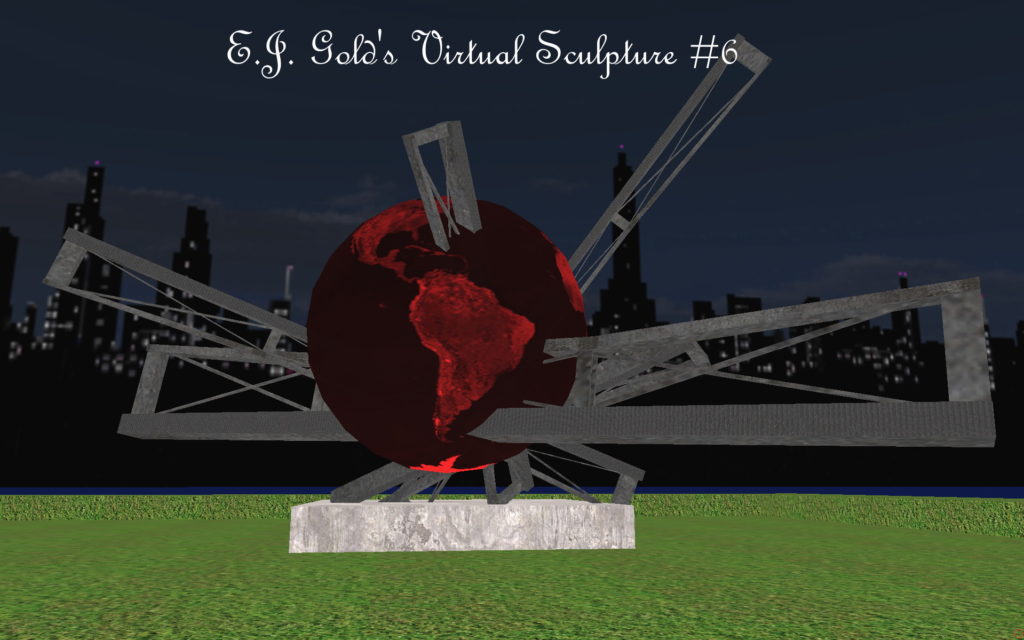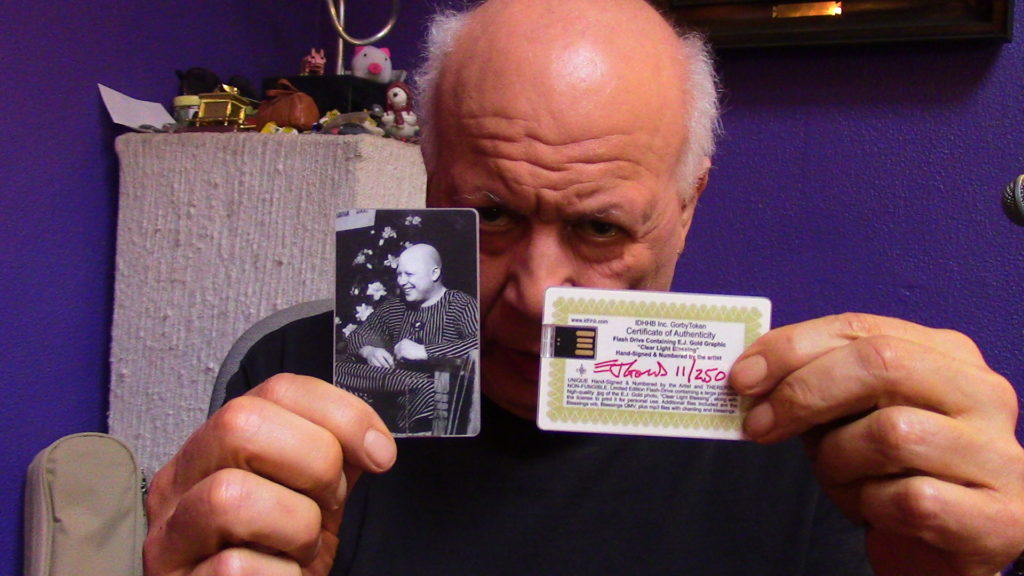Virtual Sculpture is not digital art. Digital art is produced one way, and virtual sculpture is produced in an entirely different way.
Virtual sculpture in its purest form is an artistically stacked set of one or more boxes in a virtual environment.
It’s built, not painted, and the result is more than an image. It has BUMPABILITY, meaning that it’s got collision effects, and you can bump into it, thereby fulfilling Mata’s classic answer to a student’s question, “What is Real?”, to which she responded, “Real is whatever you bump into.”
Bumpability is what these forms have, and what’s more, they fulfill my aim to create sculpture using the best of what I learned from Renzo Fenci and Cagliosi, both great Italian sculptors, both of whom subscribed to the notion that sculpture is basically a construction of interpenetrating masses.
It’s not about the outline, and what’s more, it should be viewable from any angle to produce the artistic effect.
Here are my basic premises:
- Sculpture should be built in the round, meaning to turn the piece constantly.
- Don’t smooth it down, meaning don’t play too much with texture.
- Masses can and should co-penetrate when they coincide with one another.
- Add and subtract, don’t smear, meaning don’t smear.
There are a few more points that I will undoubtedly add into the mix when we workshop virtual sculpture in the Godd™ Engine & Editor.
What I wanted to do with this missive is to introduce you to the idea of becoming a professional 3D virtual sculptor.
Did you know that you can encapsulate these sculptures into NFTs? Well, you can, and you can put them into little USB flash drives and sign them and number them and sell them, perhaps for a lot of money, depending on your popularity with the art enthusiasts, and there are BILLIONS of them, although not all of them are on eBay.
Here’s a secret that you can use right away:
In order to create price, we release only a limited number of signed copies of these virtual sculptures, see?
I like the number “22” for my sculpture editions, always have used that number when doing my bronzes.
You can also decide to make it one of a kind, or 1/1, meaning “One of One”.
If you did land on the number “22”, then you’d put up 22 of the same item on eBay, and let the sales counter tell you where you’re at for signing the USB wallet cards, get it???
You can make up as many as you like, but remember that you have to keep track of what you do, so you can ship out the right item.
Don’t forget that this is a PHYSICAL item that requires shipping.
Why only with a wallet card?
Because that’s the only way to guarantee authenticity and numeration in the edition — the signature and number are written onto the outside of the wallet card, making it a non-fungible token of the “full-color-credit-card-style” variety.
3D virtual sculpture is made by hand. It is hand-crafted by yanking points and adjusting Z elevations and moving box walls around.
The size, shape and coloration of the boxes will be determined by the sculptor, using f6 and other functions.
It’s exactly like stacking up boxes. I’m reminded of the time I sat on the floor in diapers playing with a set of oak blocks that had been made for us by a science-fiction writer and given to me at my first birthday party.
It’s no different now, except for the diapers, and that won’t last much longer. At some point, I will totally resemble that baby piling wooden things on top of each other, laughing and grinning and showing Mom, Dad or a visiting writer, what I just did.
Wow. And to think that 80 years later, I’m still doing the same work, but this time it’s for money.
Yes, Virginia, from this you can make a living.
So now you understand how virtual sculptures are made. They’re stacked boxes, exactly like playing with wooden blocks.
It’s nothing like playing with plastic blocks or any of the toy building kits like Legos or Bristle-Blox.
Nope, it’s just exactly like stacking boxes on top of each other or penetrating each other, like a sailor and a battleship that’s been through a space-time warp.
So you select a texture for your sculpture, such as “metl64”, which is my personal favorite for beginning sculpture.
You will then make a box inside your created space, and observe it, then alter it or leave it alone, and go on to the next box, which you place anywhere you think might work.
The first box can be your base, in which case you might want to make it a very different texture than the sculpture, such as “cement10”, which gives a very dark finish to the base.
However you make it, you still have to SELL it, which means reaching people with your pitch.
This will at first be your circle of closest friends, but the deal is, they get in on the ground floor, while you’re still a Nothing.
In the rare event that you become a little more than Nothing, you’ll have a market, and they can sell your sculptures at a personal profit later on.
I’m asking $125 for a virtual sculpture, far less than the $22,500.00 that the Bronze Dancer brought not just once, but 22 times.
I didn’t make a cent from my bronzes — they were always losing propositions, costing thousands more than anything else I might have decided to make.
I can make a huge painting on canvas for only a few hundred bucks, see? And sell it for a lot more than I can sell any sculpture.
Virtual Sculpture also has a definite “hit”, or boost to it. I’m challenged by the complexities and subtleties, and at the time time, astounded by the potential opened up by the very act of trying to make a beautiful Objective Sculpture, producing the same exact FEELING in any viewer that ever sees it.
You’re here today. Make the day last a thousand years by creating a virtual sculpture right in front of your own eyes!
If you have a strong personal media following out there, you will do well.
All you need to do is do it.
See You At The Top!!!
gorby



